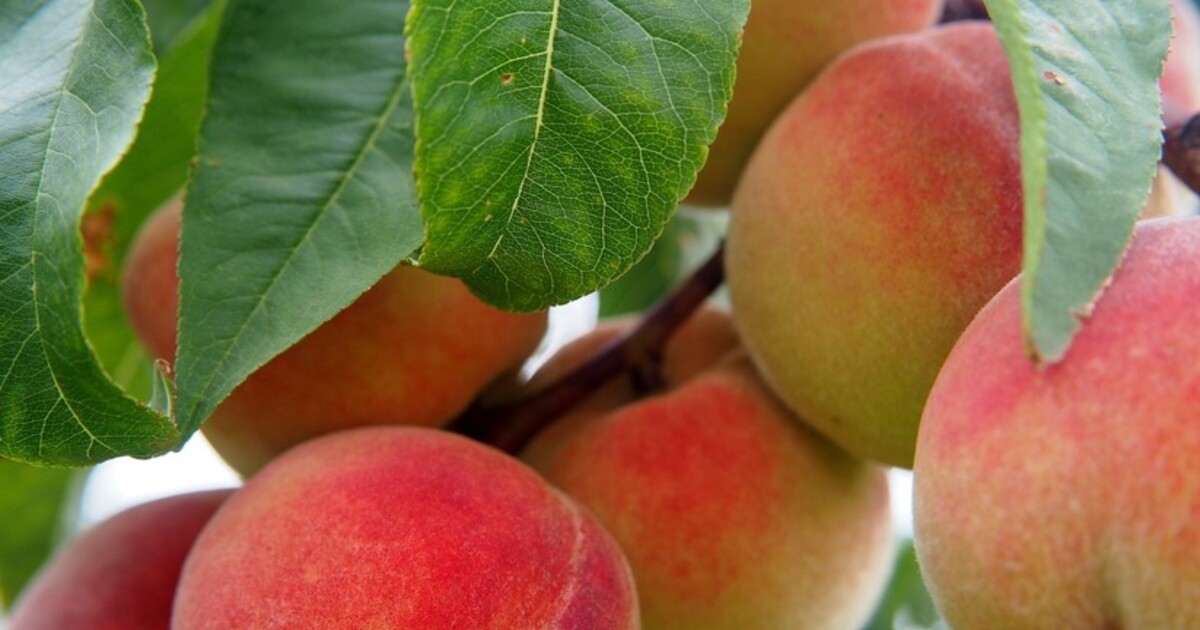The Global History of the Peach
Peach cultivation goes back thousands of years. The story of its spread is a remarkable journey from China to India and from Spain to the Americas.
October 20, 2024

There is little to beat a ripe peach warmed by the sun, eaten standing under its tree with a sound similar to a Japanese slurping noodles, to staunch the juices running down your chin and arm.
But how long since you have had one like that, unless you live somewhere in the south — of Europe or the United States — where peaches are not picked hard so as not to spoil on their way to the supermarket? That is how supermarkets still manage to sell them this late in the season.
The simple joys of life
One of the great joys of summer living in Washington, D.C. was driving to the beach (though what European would be happy to drive three hours to the beach to spend just the day there?). On the way home, we would pull into one of the farm stands lining the Delaware route.
Freshly cut corn, Silver Queen sweet as sugar, was stacked high in piles next to bowling ball watermelons and panniers of fuzzy peaches. These were as different from the peaches you could buy in supermarkets as the customary chalk and cheese. “Baseball” is the more common comparison for those not so fortunate as to have their own tree, or live somewhere south of latitude 38.9072° N.
It is a shame that modern commercial requirements should so diminish the glory of a fruit as ancient and revered as the peach. Its tree gives us so much in its very short life, dying off after only 10 to 12 years.
The origins of the peach
Although the name suggests it originated in Persia, China is believed to be where peach cultivation began, as long ago as 6000 BC, in Zhejiang Province of Eastern China.
Peach stones between 8,000 and 7,000 years old have been found at the Kuahuqiao archeological site, located in Xianghu village in the east near Hangzhou — a site which includes artifacts believed to be the oldest in existence.
Cultivation is most likely to have taken place 2,000 years ago, harvested from trees growing along the Yangtze River valley. By 1700 BC, the peach had shown up in India, with cultivation reaching Greece by 300 BC.
Two fragments of mural featuring the fruit were found in Italy at Herculaneum, preserved by the eruption in 79 AD of Vesuvius. Ibn al-‘Awwam, an agriculturalist based in Spain’s Seville, mentions the peach in his 12th-century Book on Agriculture.
From Spain, it was taken to the Americas by the Spanish in the 16th century. In the 17th century, English horticulturalist George Minifie took them on to his estate in Virginia, the same century peaches had reached England and France.
The peach “family”
Peaches are related to the rose, a remarkably expansive family which includes apples, cherries, pears, plums, blackberries, raspberries, strawberries — and apricots and almonds. When you consider that the kernel of the peach and those last two listed all taste like almonds, the relationship between them is less improbable than with the other fruits.
I got into trouble with the U.S. editor of my Périgord cookbook over a recipe for an open-faced apricot tart. It instructed cooks to crack the apricot shells then blanch and scatter a few of their kernels across the top before baking, a common French practice.
Watch the cyanide…
The kernels contain cyanide, she protested. Indeed, they do. And because some people are sensitive even to the 15 kernels that is the maximum recommended to eat in one sitting (I advised only 6 or so), I substituted almond flakes.
But for those of you writing a thriller, apricot and peach kernels could make an exotic murder weapon hard to detect. Besides, peach and apricot kernels are made into persipan, a cheap version of marzipan used in confectionery. It is not banned, probably because the kernels have been detoxified of amygdalin, the cyanogenic glycoside.
Pop quiz questions: They are the same species, so what is the difference between a peach and a nectarine? Just one single gene (the MYB25). What is the difference between a clingstone peach and a freestone? You’re right: It’s all in the name…
Takeaways
Peaches are related to the rose, a remarkably expansive family which includes apples, cherries, pears, plums, blackberries, raspberries, strawberries — and apricots and almonds.
Although the name suggests it originated in Persia, China is believed to be where peach cultivation began, as long ago as 6000 BC, in Zhejiang Province of Eastern China.
Peach stones between 8,000 and 7,000 years old have been found at the Kuahuqiao archeological site, located in Xianghu village in the east near Hangzhou, China — a site which includes artifacts believed to be the oldest in existence.
It is a shame that modern commercial requirements should so diminish the glory of a fruit as ancient and revered as the peach. Its tree gives us so much in its very short life, dying off after only 10 to 12 years.

